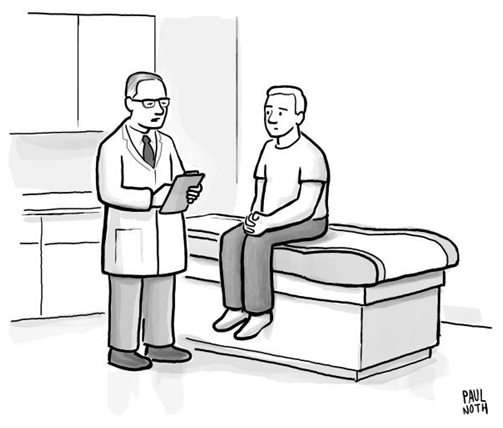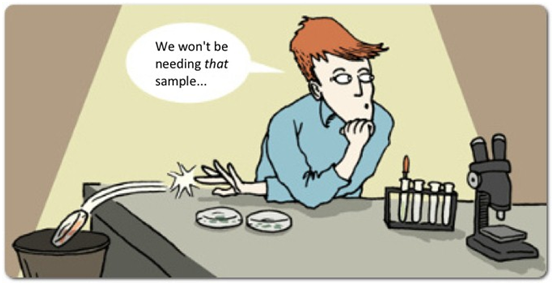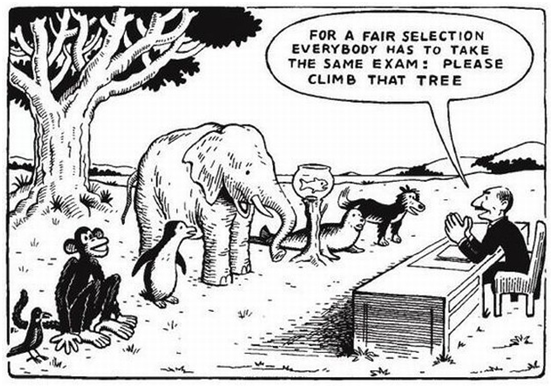Selection Bias occurs when the data selected as a sample is not random enough. In other
words, the sample is not a true one and not representative of the population
that we wish to study. The result obtained from a sample that suffers selection
bias does not reflect the correct conclusion. The presence of selection bias
results in false results. Therefore, if it is not corrected the conclusions
drawn from the study will not be precise. Selection bias have adverse impact on
surveys and epidemiological studies.
There
are many cases where selection bias can occur. When a particular section of the
population is ignored (due to various reasons such as inconvenience in
collection of data) in the sample selected from the population, selection bias
will occur.
What is Attrition Bias?
It
is a type of selection bias that occurs when a particular group or section of the
population does not participate or withdraws participants from the survey. An
example of attrition bias is a test done by a shampoo company, regarding the
effectiveness of the new product (anti-hair fall shampoo). Attrition bias
occurs as many participants withdraw from the trial or do not use the product
in the specified time limit or fail to respond altogether.
Other types of Selection Bias
- Sampling bias is another type
of selection bias. This occurs when the sample is not chosen properly,
that is not randomly selected. Often researchers choose a sample in order
to obtain a certain result, in such a case the sample is not a true
representation of the population and is biased.
- Time scale can also lead to
selection bias. When a survey is conducted for a specific period of time
and the conclusions drawn from them cannot be applied to all time periods,
or in a situation where the survey is not conducted for long enough period
of time.
- Bias can also occur when a
certain experiment is performed over and over again and only the favorable
results are reported.
What is a Self-Selecting Sample?
Self-selecting
sample in contrast to a random sample does not have any Probability
Distribution, and is based on the judgement of the researcher. An example
of such a sample could be a survey made online by the researcher, who
subsequently invites people to fill the questionnaire. In this case, the
researcher is essentially choosing the sample based solely on his choice. Self-Selecting
Sample also refers to the samples where the participants have volunteered
to participate in the survey. In such cases the chances that the sample is not
representative of the population (selection bias) is very high.
Moreover,
it gives rise to Selection Bias, where in the researcher choose the sample with specific
favorable features that are in line with the results the researcher requires.
In case the participants volunteer it could be that they create undesirable
effects in the sample. Though the concepts of selection bias and self-selecting
bias appear to be similar they are caused by different reasons. Self-Selecting
Bias occurs only due to the researcher’s judgement or the participant’s
choice to volunteer for the survey, whereas selection bias can occur due to
various other reasons seen above (for example, time scale).
Selection Bias in Epidemiology
Epidemiology refers to the study of the
distribution of health related states or events including diseases and the
application of this study to the control of diseases and other health problems.
Epidemiological investigation often requires selection of samples and uses
statistics to make efficient use of the data and draw conclusion. Case-control
studies are often preferred in epidemiology over cohort studies because
they are faster and more cost effective. However, they are more sensitive to
selection bias.
When
case-control studies are selected over cohort studies, special attention must
be paid to selection bias. Selection Bias in epidemiological studies can
also occur when a sample subject is chosen to be a part of the study as a
result of a third variable (unmeasured variable) which is related to both the
result and outcome of interest. For example, it has been noted that the
participation rate of smoker and
non-smokers differs in sample studies.
Usually
the percentage of non-smokers who turn in their questionnaires is higher than
that of smokers. It must be noted that such a difference in response will not
lead to a bias as long as it is not also associated with a systematic
difference in outcome between the two response groups.
Selection Bias in Research
Selection
bias in research often results in the results being systematically skewed in a
certain direction. It occurs when the researcher calls the shots on the
participants of the study or when the selection process of the sample is not
entirely random. It can also occur when participants self-select (by
volunteering to the survey) to the study. For example, a survey of results from
change food habitats among employees
of a certain office is conducted and all are invited to participate in the
survey.
A
person who is already health conscious decides to join the survey, thereby
self-selecting into the sample. Now if we conclude that there were positive
effects to the change in food habits based on the sample including this person,
it may be misleading.
Selection Bias in Psychology
Selection
bias in Psychology occurs because the sample taken to study the
population is not usually not representative enough of the population (in case
of psychology, the human race which is very vast). Researchers in this subject
are often base out of affluent universities and the most likely subjects to
their studies are the students around them. The studies are conducting to
analyse the perception of the subject of the topic being studied. Since all
subjects are likely to be students with similar backgrounds the results
obtained from any individual study is not likely to be universally applicable.
Something as simple as visual perception varies largely across cultures and
communities.
So
unless the sample selected is representative of the entire
population and not a single culture or community is ignored, the results are
not robust or universally applicable. To ensure that no section of the
population is ignored is a difficult task and as a result selection bias are
likely to occur in such studies. Self-Selection occurs when the
participants are invited to take part in the study and as a result an
individual with a certain quality volunteers for the study. In this case,
selection bias will occur if this characteristic has consequences to the topic
being studied.
Performance Bias
Performance
Bias occurs when the results of the
study on participants differs due to factors other than the treatment being
provided to them. This difference will occur when the participants in the
study, either the people being studied or the people providing the treatment
are aware as to which person is receiving which treatment (actual drug or
placebo). For instance, if the person providing the treatment is aware
of which patients (participants) receive the actual drug, he/she may pay
special attention to that patient and this special attention in turn may give
rise to positive results. If the conclusion is drawn on the basis of this
trial, there will be performance bias because the positive result in the
patient was not due to the drug but rather because of the special attention
he/she received from the person providing this treatment.
Similarly, this will also occur if the
patients who are to receive the treatment are aware of the treatment they will
receive. If a patient knows that he/she will receive only the placebo drug then
they might try to use other means or forms of treatment. If those other
treatments are successful then there will be performance bias in our trial,
because the positive results are not due the treatment being tested.
Measurement Bias
Measurement
bias occurs when the results of the study are poorly measured. The main cause for such errors
is lack of training of the surveyor. For instance, the surveyor is assigned
with the task of looking into data between the years 2000 and 2010. If he
refers to data between 1995 and 2005 a measurement bias will occur. Measurement
bias can also occur when the equipment being used to record results
malfunctions. For instance, the temperature are to be recorded but the
thermometer malfunctions giving rise to wrong results which in turn leads to
measurement bias.
How to Avoid Selection Bias
Given
that selection bias leads to wrong conclusions being drawn from the study being
conducted, we must take sufficient steps to prevent and avoid the occurrence of
selection bias. By avoiding selection bias we obtain more consistent and
precise findings from the study, and save time and resources in correcting
these biases. The following steps describe the various methods that can be
adopted to reduce the chances of occurrence of selection bias:
- Clearly describing or defining
the population to be studied.
- Ensuring that all concerned
groups of the population are represented in the sample.
- Ensuring that the selection of
sample is randomized. Specifically, methods that involve placing control
of selection of sample in hands of the participants of the study.
- Increasing the incentive for
participants to respond and ensuring that it is easy to contribute to the
survey/study.
- Measurement bias can be avoided
by comparing the results to a set of standardized set whenever possible.
- Blinding the investigator and
other participants to the results or status of the participants. For
instance, the care givers or investigators in a drug trial should not be
aware whether the participant receives the actual drug or the placebo
drug. Similarly, blinding the participants would involve not telling them
the exact research being undertaken in the study.
- By asking exhaustive questions
and avoiding open-ended questions in the questionnaire. By avoiding
ambiguous questions which are open to interpretation, the chances of
obtaining relevant data are increased.
- A clear data analysis plan must
be in place and the surveyor should be aware of it as well as
well-trained. This too reduces the chances of measurement errors.
- Avoid methods that involve
self-selection sample.
- Increase the size of the sample obtained.
- Visit Us
If you need more help in selection-bias
Click here



